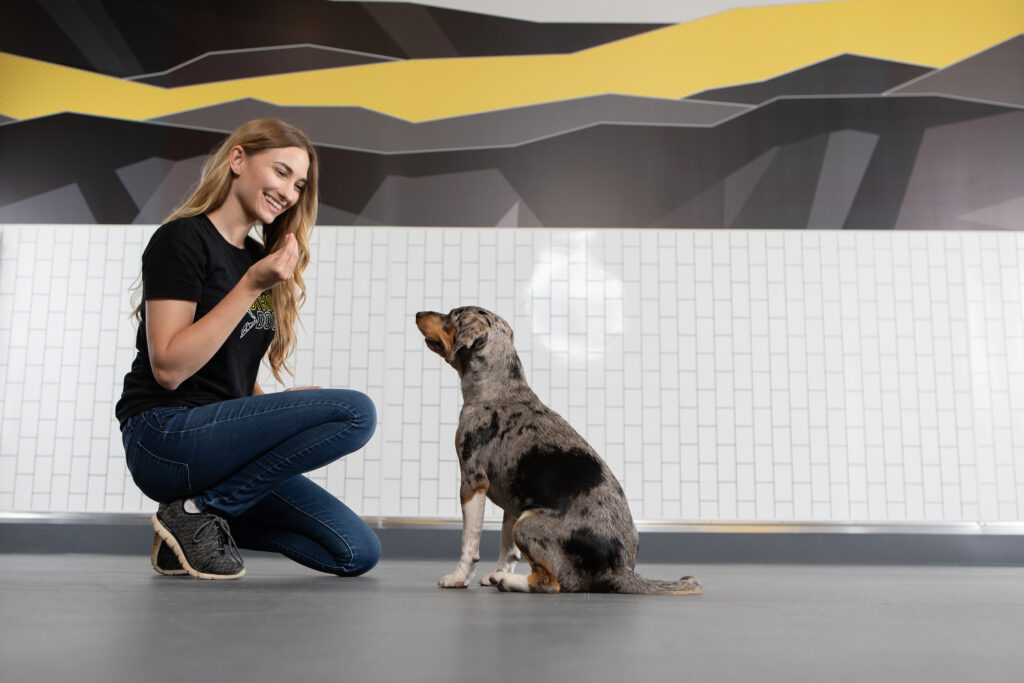Welcome to District Dogs, where we believe in the power of training to transform lives – not just for our human clients but for our canine ones as well. In the world of pet care, one of the most poignant challenges we encounter is separation anxiety, a condition affecting an estimated 20-40% of dogs seen by animal behaviorists. This statistic isn’t just a number; it represents countless anxious dogs and concerned owners seeking solutions. Using training to help with separation anxiety is more than a method; it’s a journey towards building trust and confidence in our pets. As we embark on this journey together, we’ll explore how understanding, patience, and the right training techniques can significantly alleviate the stress and discomfort caused by separation anxiety, ensuring a happier, more relaxed life for our beloved dogs.
Introduction: Navigating the Challenges of Separation Anxiety at District Dogs
Hello to all the dog parents out there! At District Dogs, we’re tackling an issue close to many of our hearts: separation anxiety in dogs. It’s more than just a bit of whimpering when you leave for work; it’s a significant challenge affecting not just our beloved dogs but our daily lives too. Let’s unravel this puzzle together, understanding what it is, how to spot it, and most importantly, how to help our furry friends cope better.
What is Separation Anxiety in Dogs?
Separation anxiety is a bit like a shadow that looms over some of our dogs when they can’t see us. It manifests in various forms – some dogs might get a tad restless, while others may spiral into a frenzy. It’s crucial to understand the spectrum of this anxiety because it helps us tailor our approach to each individual dog’s needs.
Recognizing Signs of Separation Anxiety
Do you often return home to find a scene of destruction or hear complaints of incessant barking? These may be your dog expressing their anxiety. From pacing to excessive howling, and even house-soiling – these behaviors are your dog’s way of saying, “I missed you way too much!” Spotting these signs early can make a world of difference in how we handle their anxiety.
The Role of Dog Training in Managing Separation Anxiety
Here’s where we at District Dogs come in with a beacon of hope. Training is a powerful tool in combating separation anxiety. It’s not just about teaching your dog commands; it’s about instilling confidence and a sense of security. We use positive reinforcement to encourage good behavior, creating a routine that reassures your dog that it’s okay to be alone sometimes.
Finding the Threshold: Starting Point for Training
Every dog has their own ‘anxiety threshold’ – a specific moment when being alone becomes too much to handle. Our goal is to identify this threshold. Whether it’s the second you put on your jacket or the moment the door clicks shut, understanding this threshold is vital in formulating an effective training plan.
Strategies for Gradual Desensitization
This is where the magic happens. Gradual desensitization is about baby steps – starting from just touching the doorknob to eventually stepping out for a few minutes. We’ll slowly but surely extend the time you’re away, helping your dog get used to the idea of being alone without feeling abandoned.
Addressing Pre-departure Cues
Dogs are observant creatures; they often pick up on subtle cues that signal your departure. At District Dogs, we focus on desensitizing your dog to these pre-departure cues. Whether it’s putting on your shoes or grabbing your keys, we incorporate these into our training sessions, slowly disassociating them from the anxiety of you leaving.
Individualized Training Approaches
We understand every dog is a unique individual. Their response to separation anxiety training doesn’t follow a one-size-fits-all pattern. It varies widely and is not necessarily tied to age, breed, or temperament. We tailor our approach to suit each dog’s specific needs, ensuring the most comfortable and effective training experience.
Training Schedules and Best Practices
Our mantra is ‘little and often’. We recommend keeping training sessions concise – about 30 minutes per day – and not daily. Diversity in training times and involving all family members are key. This variety helps reinforce the training and ensures your dog is well-prepared for any scenario.
Seeking Professional Assistance
Sometimes, the path can get a bit rocky, and it’s perfectly okay to seek help. District Dogs is here to support you, whether it’s connecting you with a Certified Separation Anxiety Trainer (CSAT), a veterinary behaviorist, or providing additional resources.
Conclusion: Your Partner in Pet Care – District Dogs
As we wrap up our journey through understanding and managing separation anxiety in dogs, it’s clear that this is a path marked by patience, understanding, and consistent effort. At District Dogs, we’re committed to providing you and your furry companions with the guidance and support needed to navigate this challenge. Remember, each dog is unique, and so is their journey towards overcoming separation anxiety. The key is not to rush but to move at a pace that is comfortable for your dog, ensuring a gradual and positive transition to being alone. Through our tailored training approaches, desensitization techniques, and the understanding of individual thresholds, we aim to transform those anxious goodbyes into peaceful departures. If you ever feel overwhelmed, remember, District Dogs is here to help, be it through professional training support or just a comforting word of advice. Together, we can make a significant difference in the lives of our dogs, helping them become more confident, relaxed, and happy, even when we’re apart.


